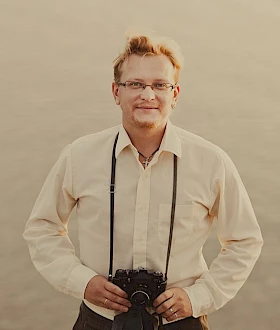Monastery of Saint Barnabas and the Icon Museum
One of the key places on the island not only for pilgrims but also for tourists interested in history.

Saint Barnabas Monastery
On the outskirts of Famagusta, on a small elevation overlooking the vast ancient city of Salamis, stands a two-domed church dedicated to Saint Barnabas, the patron saint of Cyprus.
The original church was founded at the end of the fifth century, possibly in 477 AD, when Emperor Zeno funded the construction of a basilica near the site where Archbishop Anthemios discovered Barnabas's tomb.
The church had a wooden roof and included cells, gardens, aqueducts, and places designated for receiving pilgrims. It was perhaps intended that pilgrims on their way to Jerusalem would stop here and visit the shrine.
Two buildings were added to the complex during the reign of Justinian I (527-565 AD) by the next archbishop, Philoxenos.
However, the church was heavily damaged during the Arab raids in the 7th century, and the only remnants visible today are the original apse on the eastern side.
The Monastery of Saint Barnabas in its current form was built on the ruins of the Byzantine church in the 18th century. It was constructed with three domes, but due to the lack of a foundation and soft soil, one of the domes along with the apse collapsed. When repairs were carried out, the third dome was not replaced, giving the church an unusual square appearance. Inside the church, you can see a fresco illustrating the bishop's dream, the discovery of the body, and the handing over of the Gospel to the emperor.
As of 1974, three monks lived in the monastery, earning their living by selling honey and painting icons. The monastery was abandoned after the Turkish invasion of Cyprus.
Who is Saint Barnabas
Saint Barnabas was a Jew from Salamis. Born Joseph, he went to the Holy Land to study law, where he met the apostle Paul. While being educated in Jerusalem, Barnabas witnessed some of Jesus's miracles and converted to Christianity in 33 AD. He donated his family property to the early church and the poor of Jerusalem.
Becoming the Archbishop of Salamis, Barnabas made such an impression on the Roman ruler of the island, Sergius Paulus, that he himself converted to the faith — Cyprus, in turn, became the first region in the world with a Christian ruler.
During his second visit to the island in 75 AD, Barnabas was arrested and imprisoned in the synagogue of Salamis — that same night, a crowd of Jews stoned him to death and threw his body into the sea.
However, his followers found Barnabas's remains and secretly buried him in a tomb under a carob tree west of the Salamis necropolis. His companion John Mark placed a copy of the Gospel of Matthew on Barnabas's chest. Saint Barnabas's tomb lay undiscovered for more than 400 years until the 5th century AD when Archbishop Anthemios discovered the burial site.
Icon Museum
Today, the church, which no longer houses a monastic community, functions as an icon museum. The former premises also contain an archaeological museum with artifacts dating back to the Neolithic period.
In addition to icons, the museum holds a stunning collection of Cypriot artifacts dating back to the 7th century BC. The chapel, which now houses the archaeological collection, includes the tomb of the saint.
The icon museum holds one of the best collections of ancient artifacts from the Bronze and Early Iron Ages in Northern Cyprus. The archaeological museum also holds relics from the nearby ancient city of Enkomi, which dates to the period of Ancient Egyptian influence.
Interesting Facts
- In 1844, Nottingham Cathedral dedicated to Saint Barnabas was opened in London.
- Saint's feast day: June 24 in the Orthodox Church and June 11 in the Catholic Church.
Frequently Asked Questions about the Monastery
What are the opening hours of Saint Barnabas Monastery?
The monastery and museum are open Monday to Saturday from 9:00 AM to 5:00 PM. Closed on Sundays.
How to get to Saint Barnabas Monastery?
Bus. There is no direct public transport to the monastery, but you can take a minibus from Famagusta to Iskele, get off at the roundabout opposite the ancient city of Salamis, and walk about a kilometer.
Taxi. The place is known to any taxi driver; from Famagusta and Iskele, it will be inexpensive, but from other locations in Northern Cyprus, it will be more costly.
Car. It is easy to reach the monastery by your own or rented car — from Famagusta, it is only 10 kilometers. Below is a map with the location of Saint Barnabas Monastery.
Follow us on Instagram and Telegram to learn all the most interesting and unusual things about life on the island!

